Episcopal Church of the Good Shepherd - Table of Contents
![]()
Episcopal Church of the Good Shepherd - Table
of Contents
Presentation of
the Infant
Jesus in the Temple
Episcopal Church of the Good Shepherd
96
Jewett Pkwy. at Summit, Buffalo, NY
Episcopal
Church of the Good Shepherd - Official Website
|
Dedicated: |
1888 |
|
Design and fabrication: |
Messrs. Booth, London |
|
Style: |
Munich
Pictorial Style |
|
Bible verses: |
Luke 2:22-39 (online Jan. 2021) |
| Iconography: | Presentation of the Infant Jesus in the Temple |
|
Memorial window: |
Suzette Ingersoll, by Robert Pliny Hayes |
|
Location in church: |
South nave |
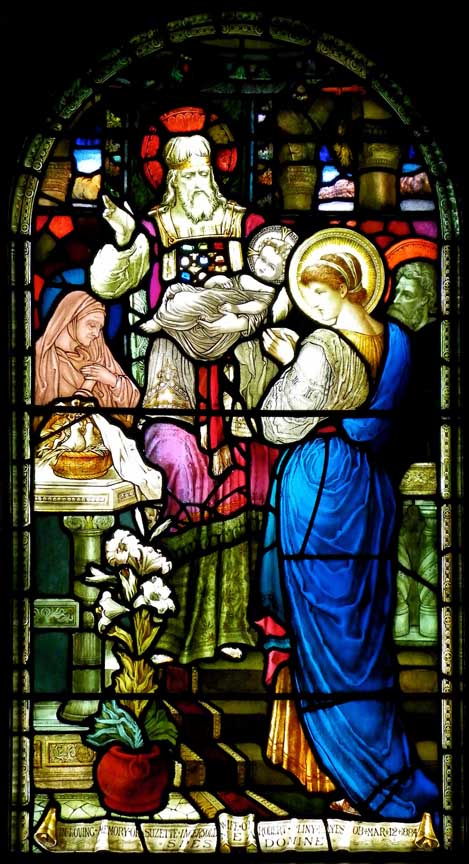 Presentation of the Infant Jesus in the Temple ... Details below: 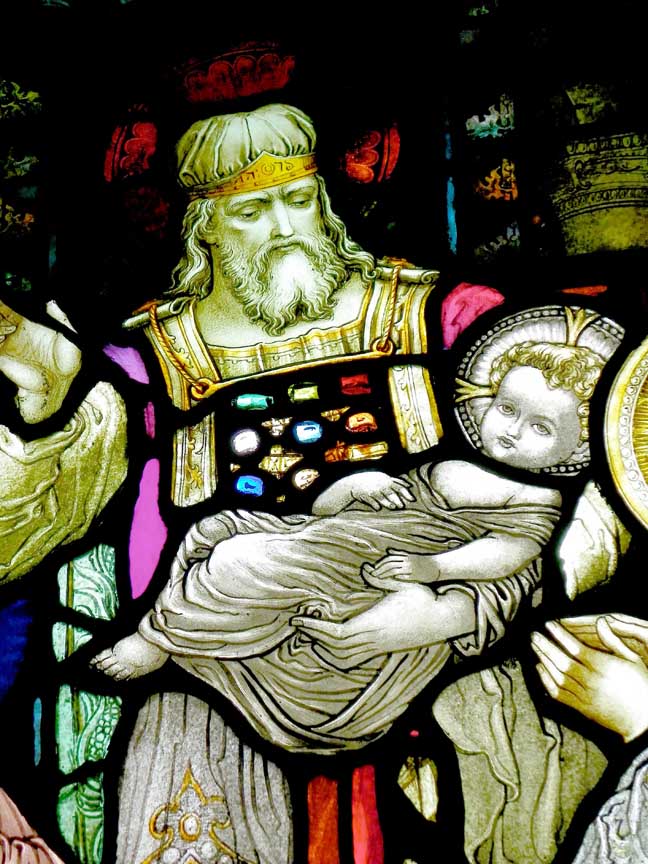 Simeon and Jesus  Simeon 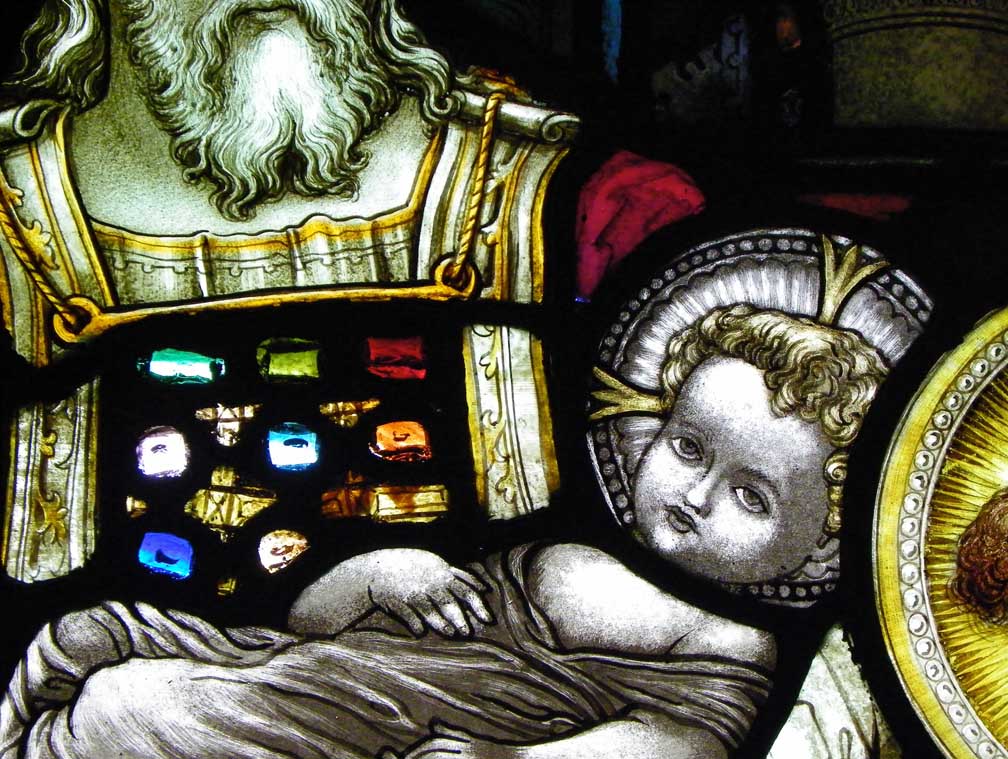 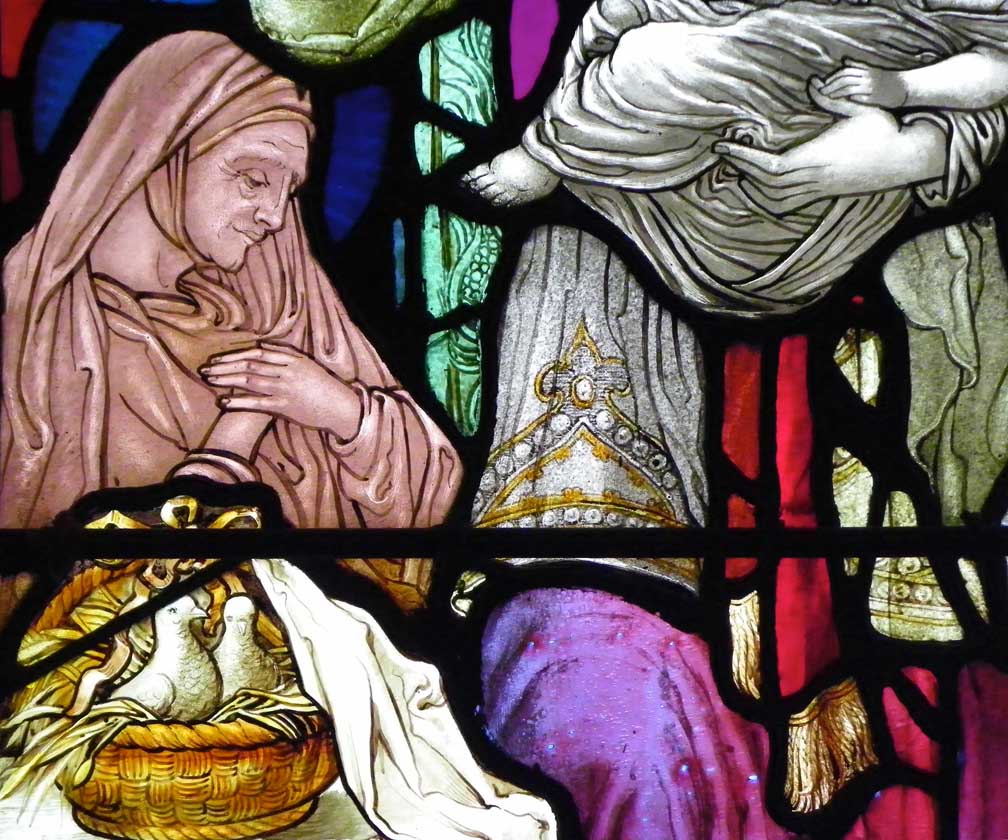 Prophetess Anna 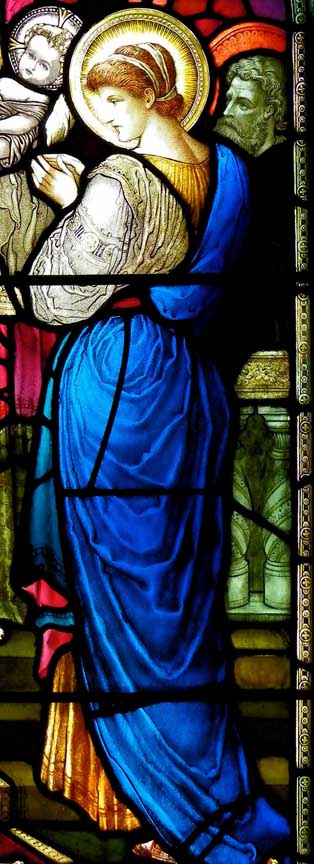 Mary    |
|
Commentary
The StoryBy Kevin Rung The window is a complete story told in canticle that is well known to Episcopalians especially, and Christians in general. The Song of Simeon or Nunc Dimittis (The Gospel of Luke 2: 29-32) Lord you now have sent your servant free* to go in peace as you have promised; For these eyes of mine have seen the Savior,* whom you have prepared for all the world to see: A light to enlighten the the nations,* and the glory of your people Israel. Not touching the historical or theological points, and there are many, I would comment on two points making this window a spectacular subject for artist and viewer. First, the whole story can be told in one discreet window scene. And, this story can be told simply. Second, Simeon's language references to: a) his eyes seeing; b) for all the world to see and; c) a light to enlighten, make for a perfect use of the medium! The medium becomes the message. Certainly all consistent with Booth's styled romanticism. Depiction of Architecture in the Window Little is revealed in the window about the temple. However, the depiction is framed by a three-centered arch known to have been in use in the Levant before Roman influence. We commonly know this structure as the Roman Arch. In the background, there is a glimpse of two temple columns, showing mostly capital. I could imagine that these are Solomonic columns, although imagination is needed, as the serpentine structure is not clear. The artist/designer would have likely termed these of the Tuscan Order with its unadorned, simple capital. Reading the architectural iconography, I see the arch not as a symbol, but as a tool that gives the viewer a window within the window to focus on the scene unfolding. This is harmonic with the documented scriptural story that for many of the faithful is a part of thier daily routine. The Song of Simeon is a traditional evening and night prayer. Meaning can be found too. The arch is completely simple, reminding us to look at the scene, not the window frame! This theme is repeated in the column depiction - it's simple, so as not to distract our eye from the mystical workings of God, where past and future meld, in our prayerful, gazing moments at the window. The Characters Simeon dominates the window center, the infant Jesus, however, is the where the eye centers, as all characters and artistry draw us to Him. The Virgin Mary is next prominent. To her right is Saint Joseph, and, off to the left is the prophetess Anna, a pious widow and gadfly of the temple. Shown in an odd pure sepia relief, it indicates that Anna is near death. But her joy, and Simeon's (who also shows a palour), is great. It is the moment when the serpentine columns of thier live are capitalized! Additional Iconography Much depicted by Booth is less arcane meaning and more simple story-telling. For example, Simeon's crown, to me, has two or three unambiguous messages. First, it represents the Holy Spirit coming down on him, second it represents the crowning achievement of his life and, third it may indicate that his life has so pleased God, that he shall be awarded in the Kingdom of Heaven. Crowns and doves do have traditional iconographic meanings, but, in this case, they are just part of the story. The doves are historically known as the offering made at presentation of first born Jewish males to God at the temple. Two items deserve special mention, and, in a way, they are connected. The vase of lilies are the traditional symbol of Mary's purity. But in some Anglican (English) depictions, the lilly's use is to evoke the concept of the incorruptible bodies of saints after death. (This, as a rare phenomena, has been well documented from time to time in history and science.) Second, the Christ Child is pure white, a representation, I think, of his incorruptible body and, his prophesied death and resurrection. |
